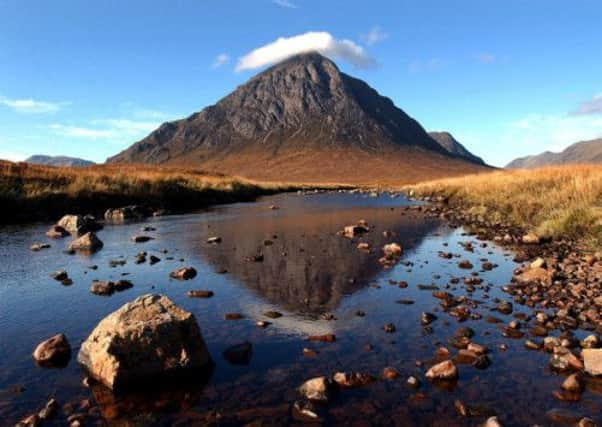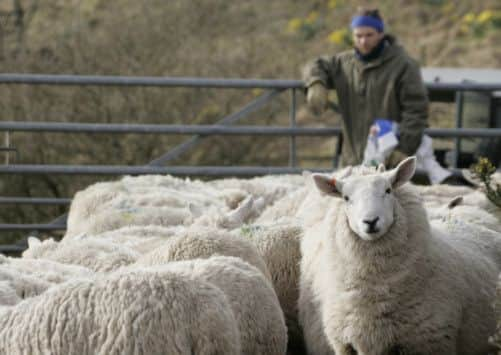RSPB: Nurturing those who help nature grow
This article contains affiliate links. We may earn a small commission on items purchased through this article, but that does not affect our editorial judgement.


IF YOU have ever visited the Highlands and Islands of Scotland, it’s hard not to be inspired by the stunning landscapes – from the grandeur of Glen Coe to the patchwork of fields and crofting townships across the islands.
You may have been lucky enough to see some of Scotland’s truly amazing wildlife; the mighty sea eagle, carpets of sea pink in bloom and the rare Great Yellow bumblebee. If you’re fortunate enough to live in these places, you’ll know better than most that nature is close at hand.
Advertisement
Hide AdAdvertisement
Hide AdBut have you ever spared a thought for how this came to be? Maybe, in some dim recess, you recall a long ago geography lesson; the Highland boundary fault, frozen glaciers carving out great glens and brute forces pushing mountains skywards.


And have you ever stopped to think about mankind’s role in shaping and moulding the world in which we live?
Ever since Neolithic man first cleared Scotland’s forests to make way for crops and livestock, farming has played a vital role – not just producing the food we all rely on, but creating the wealth of nature which so many of us cherish.
For thousands of years, traditional farming and crofting methods have produced a benign environment, in which wildlife has thrived and flourished.
But, in more recent times, a shift towards more intensive farming methods has reduced the nature value of much farmland, squeezing out the diversity of habitats that birds, bees and other creatures need, and resulted in a more uniform landscape. This isn’t the case everywhere. Around 40 per cent of Scotland is still farmed in ways that make it a haven for wildlife – High Nature Value (HNV) farming to use the jargon.
Across large swathes of our upland areas, and a few lowland areas too, farms and crofts produce cattle, sheep and some crops in ways that benefit nature.
It’s a way of life and a way to make a livelihood for many people across the Highlands and Islands.
But it’s a way of life under threat, and many people, and the wildlife that depends on them, are living on the edge.
Advertisement
Hide AdAdvertisement
Hide AdFarming in these places is tough. Harsh weather, poor soils, distance from markets and low prices for the food produced, conspire to make this a hard way to earn a living.
The odds are stacking up against HNV farming.
There are some who think this way of life – and way of managing the land – has no future. That only relentless growth and economies of scale represent progress.
Is “bigger” always “better”? Maybe – if we’re talking chocolate cake and that glass of wine after a hard day at the office. But not without question. We need to learn to value what we already have before it’s too late and it has gone.
In the case of HNV farming that means valuing a system, not just for the food it puts on our plates, or the home created for elusive birds like the corncrake, but for a wider contribution.
For example, if you are visiting Scotland on holiday and reading this, perhaps you are one of the 65 per cent of visitors who feel that nature-wildlife is an important or very important factor in choosing Scotland as a holiday destination.
By coming here, you are spending your money in local economies – not just nature value then, but hard cash in rural economies that need it.
The frustration for the farmers and crofters who produce this natural value is that they rarely benefit financially, unless they’re involved in the tourism sector.
They can sell the cattle and sheep they produce, but there is no way to earn a market reward from the wildlife and other environmental benefits produced in tandem.
Advertisement
Hide AdAdvertisement
Hide AdIn a world of different economics, HNV farmers and crofters would earn the true value of all that they work so hard to produce, whilst environmentally damaging farming systems would pay the price. But we have not made that paradigm shift yet and so HNV farming and crofting needs our help if we believe it ought to survive.
The tools to do this lie within the European Common Agricultural Policy, a reform of which is currently being negotiated.
Reform can’t come a moment too soon to a muddleheaded policy; one that hands out the greatest quantity of taxpayers money to those farming in the most productive and least disadvantaged parts of Scotland.
Meanwhile, the farmers and crofters who depend on public support the most, receive the least.
Over the coming months, the Scottish Government will be taking some important decisions about how to spend an annual farming budget in the region of £650 million. That’s around £129 each year for every Scottish citizen. A lot of money which, spent wisely, can ensure a better future for all of Scotland’s HNV farmers and crofters and can encourage a greener approach to farming everywhere. Maybe we should urge our politicians to “ask not what nature does for us, but what we can do for nature”.
• Vicki Swales, Head of Land Use Policy for RSPB Scotland. Visit them on Facebook